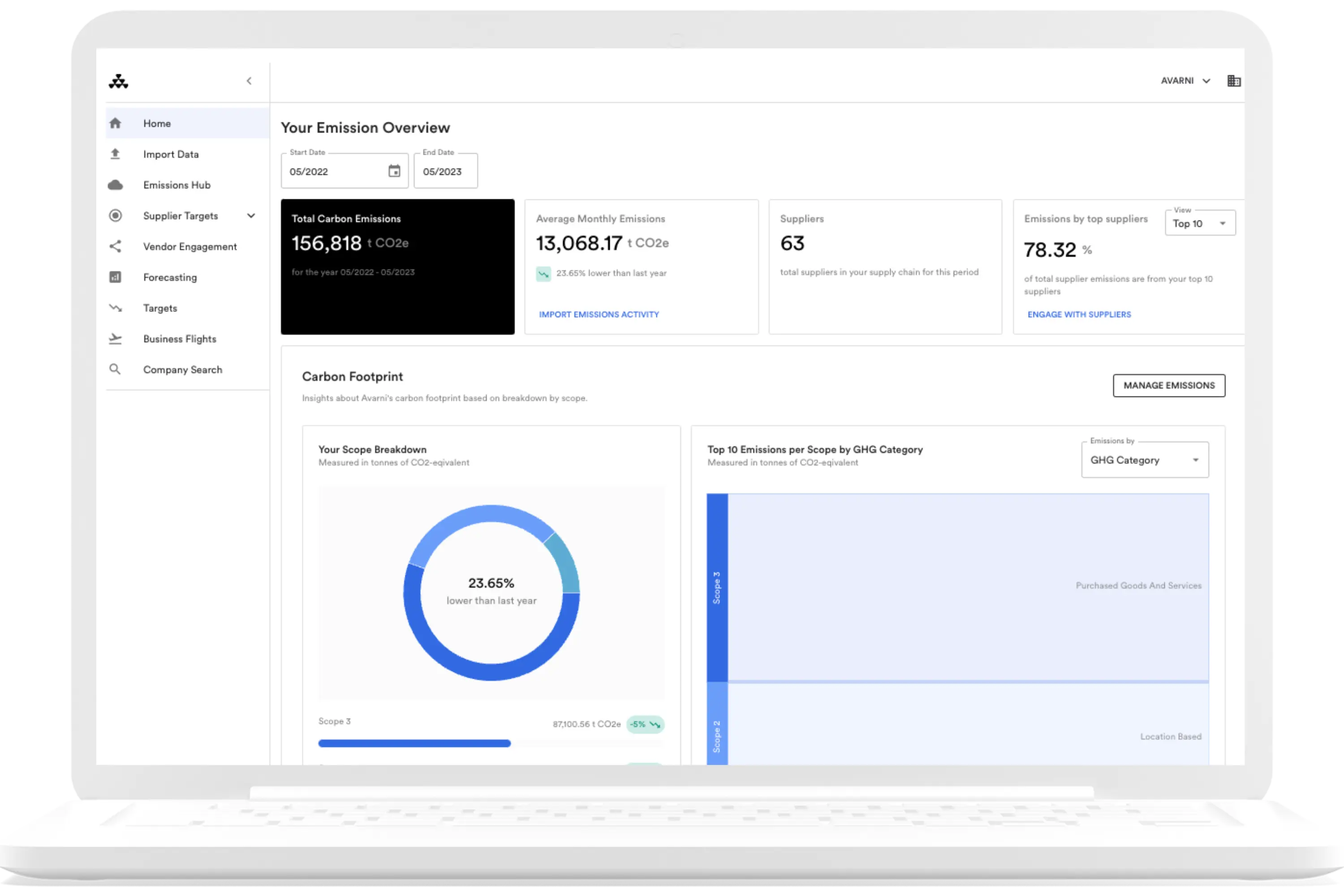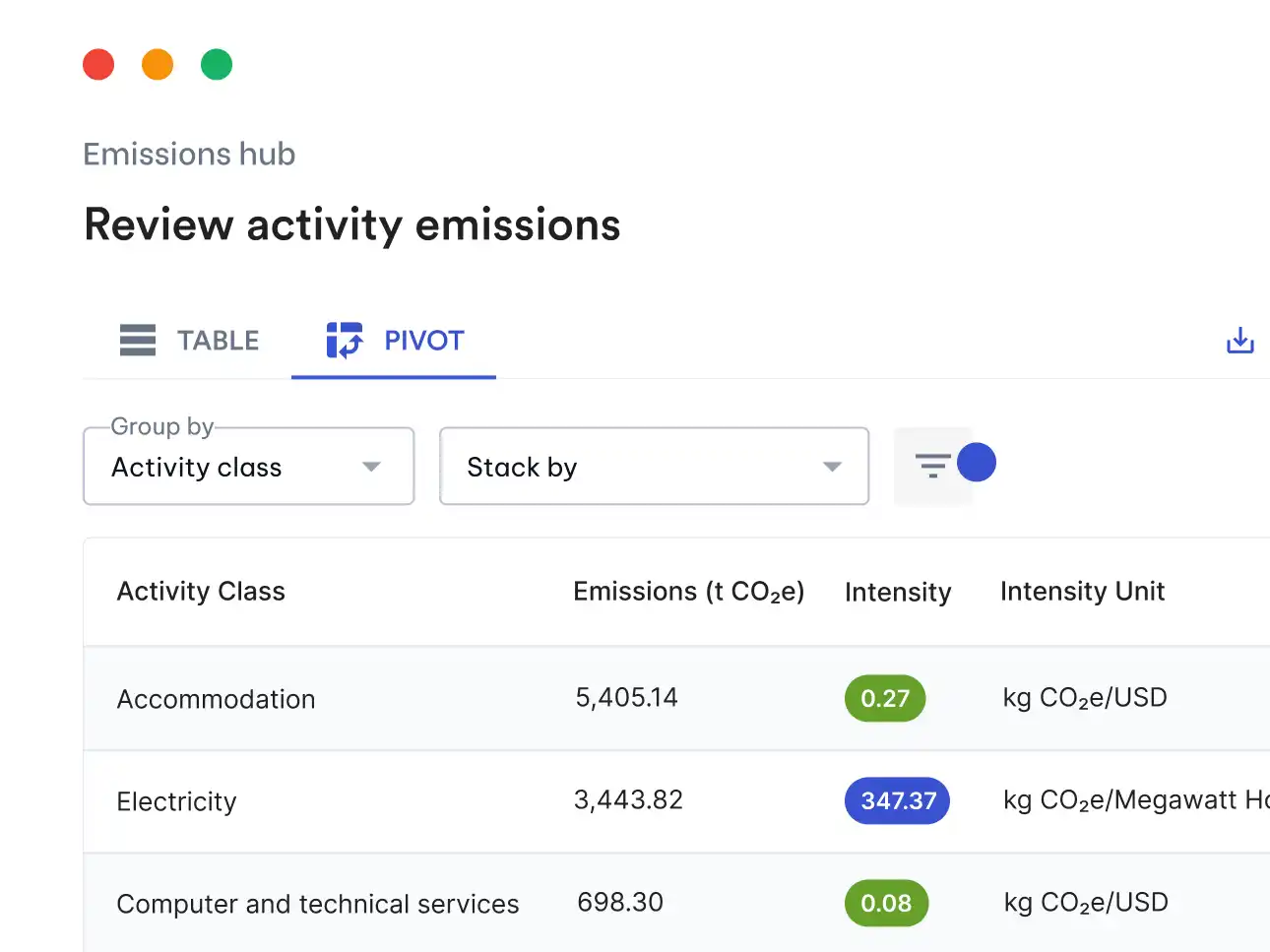Companies around the world are under increasing pressure to be more transparent about their impact on the environment, economy and society. Various stakeholders, including customers, investors, and governments, expect companies to self-report on these factors on a regular basis. As such, many companies now publish annual corporate social responsibility (CSR) reports or environmental, social and governance (ESG) reports.
However, with “greenwashing” becoming more common in recent years, stakeholders have come to rely upon globally-recognized sustainability reporting standards and frameworks to ensure the ESG data being reported is standardized and quantified in a consistent manner.
At Avarni, we are committed to helping businesses meet their decarbonisation goals and we understand the role that sustainability reporting plays in those initiatives. With the right partner, GRI reporting doesn't have to be a tedious and time-consuming task, but rather, an opportunity to transform raw data into actionable insights. Read on to learn more about GRI reporting, and how Avarni can help.
What is GRI reporting?
Founded in 1996, the Global Reporting Initiative (GRI) is an international non-profit organization that provides a set of comprehensive standards for organizations to use in their sustainability reporting.
GRI reporting helps organizations identify, measure and report on a wide range of sustainability topics including: greenhouse gas emissions, water use, human rights, diversity and inclusion, supply chain management, and corporate governance.
What are the GRI Standards?
Launched in 2016, the GRI Standards were the first global standards for sustainability reporting and are a free public good, with the full set of GRI Standards and Individual Standards available to download from GRI’s website.
The GRI Standards cover all three ESG pillars and are are organized by:
- Universal standards that apply to all organizations (foundation, general disclosures, management approach)
- Topic-specific standards (economic, environmental, social)
- Sector standards for 40 high-impact industries
The GRI Standards are used by a wide variety of organizations, from small businesses to large multi-national corporations, to voluntarily report their sustainability performance on an annual basis. They enable organizations to gather, measure, manage and report their sustainability performance in a clear, reliable, consistent and transparent manner. In addition, the GRI Standards provide a common language and reference point for stakeholders, allowing them to compare and track performance over time.
How is GRI reporting developed and updated?
The GRI Standards are developed by an independent body of experts, representing a variety of organizations, including businesses, civil society, investor organizations, and UN agencies. The GRI Standards are regularly reviewed to ensure they remain relevant, reliable, and consistent with the latest available evidence, and that they remain responsive to changes in the global sustainability landscape. They are also reviewed to ensure they are usable in different sectors and contexts, and are applicable to organizations of different sizes and operating in different countries.
A note on reporting standards vs. frameworks
It’s important to note that GRI provides a set of reporting standards, and despite various online articles stating otherwise, it is not technically a framework.
The main difference between sustainability standards and frameworks is that standards provide more specific guidance and detailed requirements for organizations to follow when reporting on their sustainability performance.
Standards – such as the GRI Standards – provide a comprehensive set of principles, indicators and guidance that organizations must adhere to in order to accurately measure and report their sustainability performance.
On the other hand, sustainability frameworks – such as CDP and TCFD – are more general in nature and provide organizations with a broad set of guidelines and principles that they can use to develop their own sustainability performance management systems.
While standards are typically developed by an independent body of experts, frameworks are developed by individual organizations, who may choose to use existing frameworks or create their own.
For more information, see ESG standards, frameworks and everything in between (pdf).
How popular is GRI reporting?
GRI reporting is used by over 10,000 organizations in over 100 countries to measure and report on their economic, environmental and social impact. KPMG’s 2022 survey on the state of sustainability reporting revealed that GRI reporting is the world’s most widely used standards for sustainability reporting, with:
- 78% of the the world’s biggest 250 companies (G250) now adopt the GRI Standards for reporting;
- 68% of the 5,800 the top 100 businesses in each of 58 countries (N100) companies use GRI;
- Overall, 96% of G250 and 79% of N100 report on sustainability or ESG;
- Carbon reduction is widely disclosed (80% of G250 and 71% of N100) – yet under half (46% of G250, 40% of N100) report on biodiversity;
- Almost three-quarters of those surveyed (74% of G250, 71% of N100) report on the SDGs;
- GRI offers the only reporting standards used by a majority of surveyed companies in all regions (75% in the Americas, 68% in Asia-Pacific and Europe, 62% in ME & Africa).
What are the benefits of GRI reporting?
The benefits of GRI reporting include:
- Improved stakeholder engagement: By providing stakeholders with a clear picture of their performance on sustainability issues, organizations can better understand their stakeholders’ needs and build trust.
- Increased public trust: Companies that report their sustainability impacts publicly demonstrate their commitment to having a positive impact on society, helping them to build trust with the public.
- Improved performance: Organizations that use GRI reporting can identify areas where they are performing well and also identify opportunities for improvement. This can help them to align their sustainability strategies and achieve their goals.
- Benchmarking: Organizations can compare their performance to others that are using the GRI standards, helping them to identify best practices and set goals for improvement.
What are the challenges associated with GRI reporting?
GRI reporting presents a number of challenges for organizations:
The first challenge is the complexity of the GRI Standards. The GRI Standards are complex and require a significant amount of expertise and resources to understand and implement.
Additionally, the GRI Standards are constantly being updated and revised, which requires organizations to stay up-to-date with the latest developments in order to remain compliant.
Finally, many organizations lack the necessary resources to properly implement GRI reporting. While GRI provides information and resources to assist organizations with their sustainability reporting, GRI reporting requires a significant amount of data collection and analysis, which can be time consuming and costly.
How Avarni simplifies GRI reporting
With Avarni’s help, you can confidently navigate the complexities of GRI reporting and ensure you’re taking all necessary steps towards reducing your organizations’ environmental footprint. We are proud to offer our clients the highest quality support when it comes to emissions tracking for GRI reporting, ensuring you have the best chance of meeting your sustainability goals while staying ahead.
Here’s how Avarni can help you:
- Our comprehensive reporting platform completely automates the process of Scope 1-3 emissions analysis from spend data & activity data, using a proprietary world-first natural language processing AI.
- You can invite your suppliers to add their own emissions and SBTis, and leverage Avarni's proprietary web crawler to automatically bring sustainability information about any organization into one place, including reported emissions and SBTis.
- From there, you can build scenarios to model & compare future emissions reduction plans. Existing vendor SBTis are automatically included in the BAU scenario.
Take the carbon inventory calculations for your GRI reporting mandate from months to days, and transform your emissions data into insights, with Avarni.

Simplify your GRI reporting with Avarni
We help companies of all sizes with their GRI reporting and overall carbon emissions tracking. Get in touch with us to find out how we can help you with yours.





